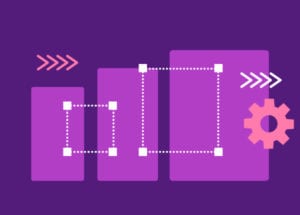In the dynamic world of software development, selecting the right technology stack is akin to crafting the blueprint for success. A tech stack, comprising programming languages, frameworks, databases, and tools, serves as the backbone of any software project. This comprehensive guide aims to demystify the process, offering insights and considerations for making informed decisions that align with the unique needs of your project.
Understanding the Components of a Tech Stack
A solid tech stack encompasses front-end and back-end technologies, databases, and various tools working in harmony. Striking the right balance between flexibility, scalability, and maintainability is crucial for building a resilient foundation.
Assessing Project Requirements
Before diving into the plethora of available technologies, conduct a thorough analysis of your project’s goals and requirements. Consider factors such as scalability, complexity, and potential growth to guide your stack selection.
Front-End Considerations
The front-end is the user’s interface with your application. Choose a framework (React, Angular, Vue.js) and programming language that aligns with your design and user experience objectives.
Back-End Essentials of the Tech Stack
Explore server-side technologies (Node.js, Django, Flask, Ruby on Rails) based on scalability, performance, and integration needs. Decide between a monolithic or microservices architecture.
Database Selection
Decide between SQL and NoSQL databases based on data structure and query requirements. Consider scalability, data integrity, and maintenance ease when making your choice.
Third-Party Integrations
Assess the need for third-party APIs and services, ensuring compatibility with popular integrations. Consider the community and support behind external services.
Scalability and Performance of the right Tech Stack
Plan for scalability by optimizing performance through tech stack choices. Implement strategies like load balancing for efficient resource utilization.
Development Team Expertise
Evaluate your development team’s skills and expertise. Choose technologies that align with their strengths, and invest in training as needed.
Budget and Resource Allocation
Balance cost considerations with the need for robust technology. Explore open-source options to minimize licensing costs and ensure long-term sustainability within budget constraints.
Security and Compliance
Incorporate security measures at every level of the tech stack. Ensure compliance with industry regulations and standards, and regularly update components to address security vulnerabilities.
Conclusion on choosing the right Tech Stack
Choosing the right technology stack is a strategic decision that directly influences the success of your software project. By following this comprehensive guide, you’ll navigate the complexities of stack selection, align your choices with project requirements, and lay the groundwork for a resilient and high-performing application. Remember, the right tech stack not only enhances development efficiency but also ensures your software is equipped to meet the evolving demands of users and the ever-changing technology landscape.






